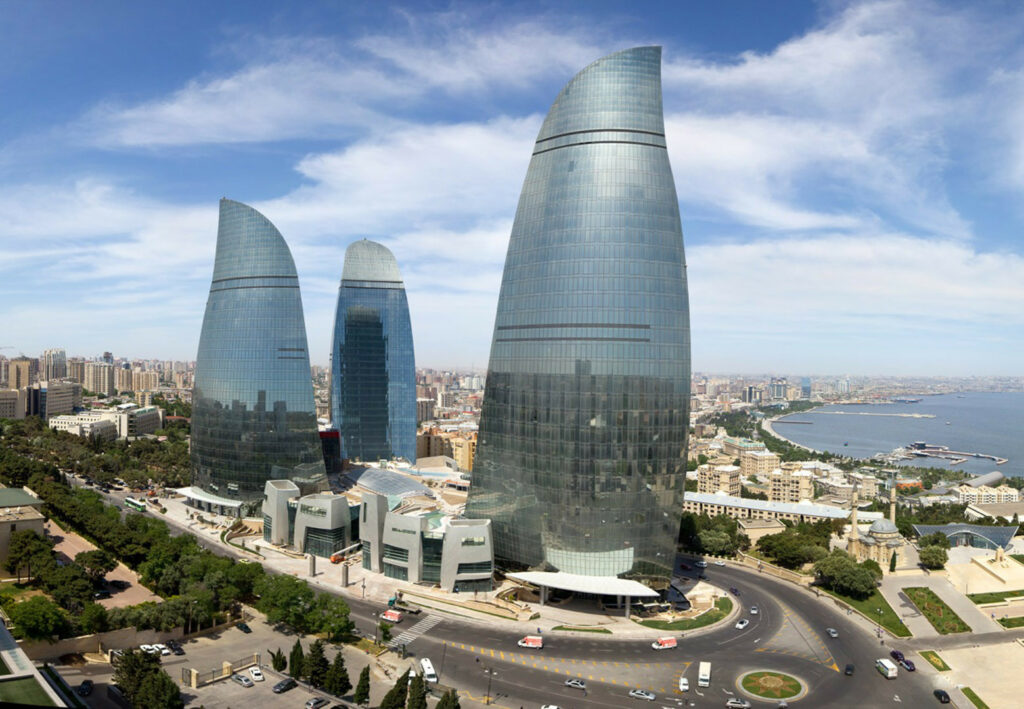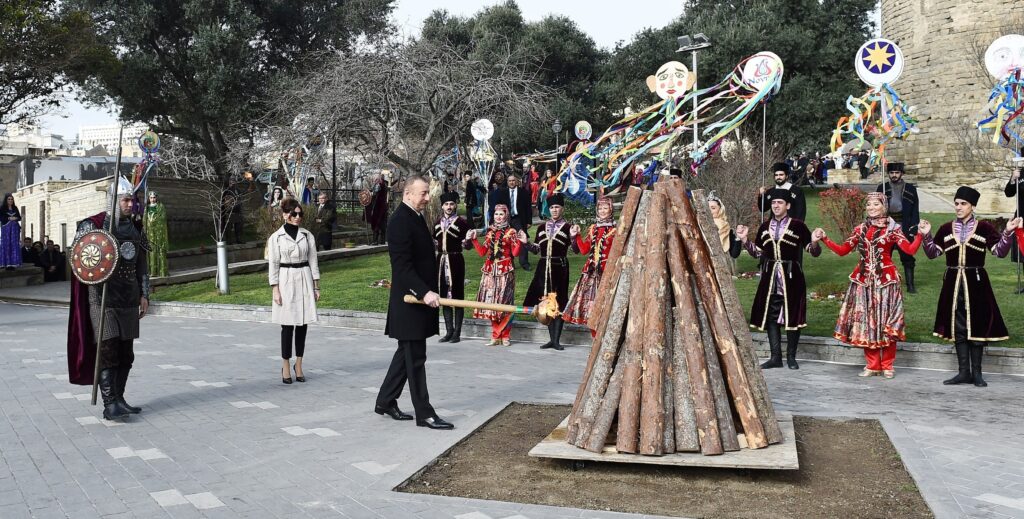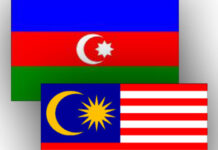BY GEMMA BIANCHI SLATER
AZERI OBSERVER EDITOR
As an expat who has lived in Azerbaijan for nearly seven years, and has made Baku her home, there are many Azeri traditions that I have taken on as my own and will continue to honour and cultivate these traditions for the years to come. The country itself is quite magical and full of mystery when you come to understand that Azerbaijan is known as the Land of Fire and its capital, Baku, the City of Winds. It is a country connected to the elements that are essential to life itself. Alongside the elements of fire and wind, Azerbaijan also offers many beautiful shalala’s (waterfalls) and deep within the earth, are the most amazing mud volcanoes you have ever seen.
So what do I consider as typically Azeri? It’s a long list; but my favourites are the delectable food, the intricate carpet designs, the vibrant, red pomegranates and the historical fable of the girl who threw herself off the top of the statuesque Maiden’s Tower, opposite the Bulvar Boulevard. If you look carefully under the shade of the leafy trees, you cannot miss the elderly (but very smartly dressed in black suits with white shirts) gentlemen in the park, playing the table board-game, Nard, which is similar to Backgammon but with different rules. Each and every visitor who comes to visit me here is taken on an exciting and historical journey of what makes Azerbaijan so rich in its diversity; with its exotic blend of Turkish, Russian and Persian ethnicity.

In terms of the top attractions to visit, my personal favourites are the shimmering, shallow, pink salt lakes of Masazir; the bubbly, mud volcanoes of Gobustan, which are surprisingly cold to the touch (for some reason I thought they would be warm?); the Yanar Dag (literally translated as burning mountain) on the Absheron peninsular, where you can sit and be transfixed into the fire’s gaze, all the while in wonder that the stone is on fire; a former fifth century Zoroastrian Silk Road pilgrimage fire temple, (also called Ateshgah) in Surakhani, epitomizing the trident symbol of the Zoroastrian’s symbolic mantra: Good word, good thought, good deed. Finally, ending with afternoon tea at the iconic, Flame Towers. Sensing a theme here? It’s not called the Land of Fire for nothing. This is just a tip of the (fire-scalped) iceberg of all the inspiring and breathtakingly beautiful sights of this country.

From drinking hot çay (tea) out of an armudi glass (some say it is the shape of a pear, some a woman’s figure) and eating eggs and tomatoes (yumurta pomidor) from a hot skillet cooked in melted butter, with hot tandir bread as the perfect accompaniment; it is my favourite Azeri meal that I would eat every day of the week.
Above all, my favourite tradition on the Azeri calendar is Novruz, the official coming of spring. After the harsh winter months, the welcoming of the warmer months are celebrated a month before the Novruz Holiday on March 21st, therefore the last four Tuesday’s of winter (beginning with the last Tuesday in February), have the elements of Wind, Water, Fire and Earth, commemorated with honour and respect. I was delighted to partake in ‘Fire Tuesday’ this year, as my neighbours built a bonfire in the courtyard, as we all stood around the fiery blaze, imagining the long summer nights with the thought of the flowers blooming again. Children also take turns to jump over a smaller fire, as it is supposed to bring luck and prosperity, but most importantly, renewal.

During this month, families celebrate by giving each other ‘khoncha’, a platter full of gifts of nuts and sweets, like Pakhlava and pastries, with a green, grass-looking centre-piece called Samani – grown from wheat seeds – and finished off with a red ribbon tied around the centre. Decorative eggs and candles are placed around the home with small wishes of joy and positivity. This is a centuries-old tradition, filled with hope and fervent wishes for the future and will continue to dominate the spring calendar for many years to come.
Finally, let us not forget, International Women’s Day on 8 March, where each year is celebrated with bunches of flowers being sent to every woman in Azerbaijan. Unlike Mothers Day, which we celebrate in the UK, where you just sent a card and a gift to your Mum and Grandmother, here in this country, every woman is celebrated! Your sister, your teacher, your friend, your auntie – as well as the mothers and grandmothers! Needless to say, this is a tradition I wish to encourage each and every year, whether I’m in Azerbaijan or back in England, because the celebration of women should be honoured and celebrated by every country.
Azerbaijan has become my home, where I am in constant awe by the varying degrees of beauty, as well as welcomed by the friendliness of a stranger on the street. It is traditional yet contemporary, and I look forward to exploring the many more surprises I have yet to discover. As long as I can eat yumurta pomidor and drink çay at the same time!



















